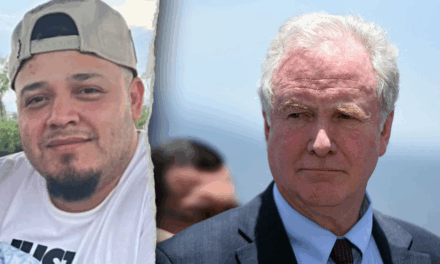In a surprising turn of events, President Joe Biden’s recent media campaign aimed at bolstering his popularity and addressing pressing issues has received a lukewarm response from within his own party. Over the past few weeks, the Biden administration has made a concerted effort to engage with various media outlets, showcasing the president’s plans and achievements. However, key factions of the Democratic Party have expressed dissatisfaction, with some party members wishing the president would simply “go away.”
This unexpected backlash highlights the complexities within the Democratic Party as it navigates through a turbulent political landscape. Many Democrats are grappling with an unsettling reality: despite Biden’s efforts to present himself favorably in the public eye, the discontent appears to be growing, fueled by concerns around his approval ratings and the looming 2024 presidential election.
Sources within the Democratic Party have revealed that a significant portion of party members feels uncomfortable with the intensity of Biden’s media blitz. While Biden aims to solidify his standing among voters, some Democrats believe that the focus should rather shift towards maintaining a low profile and allowing other potential candidates to emerge as viable options in the upcoming election.
A few high-ranking Democrats have expressed their concerns regarding Biden’s approach. They argue that the president’s frequent media appearances could overshadow the party’s broader messages and agendas, particularly as key issues like the economy, inflation, and social justice remain at the forefront of political discussions. The presidencial spotlight is seen by some as a hindrance to the party’s collective efforts in galvanizing support from voters who may feel disenchanted with the current administration.
To complicate matters further, polling data reveal that Biden’s approval ratings have dipped significantly in recent months. The president currently faces criticism on various fronts, including his handling of the economy, rising inflation rates, and persistent issues surrounding immigration and public safety. These factors have led to increased unease among Democratic leaders, who fear that Biden’s continued visibility could exacerbate existing vulnerabilities come election time.
A number of Democratic insiders have suggested that, rather than actively engaging with the media, the administration should adopt a more strategic approach to outreach. With midterm elections and the potential for another presidential run looming large, many party members seem convinced that a recalibration of Biden’s media strategy could benefit their collective electoral hopes.
In response to the growing murmurs of dissent, the White House has attempted to reassure the party’s factions. Senior officials have stressed that Biden’s visibility is aimed at reaffirming the administration’s commitment to crucial issues and to remind voters of the achievements made during his tenure. However, the effectiveness of this strategy remains to be seen as the Democratic Party grapples with its identity and direction.
Political analysts have noted that the current scenario reflects a broader struggle among Democrats to coalesce around a cohesive vision for the future. With various factions within the party holding divergent views on key policies and strategies, the recent discontent regarding Biden’s media presence serves as a reminder of the complexities facing the party as it attempts to present a unified front ahead of the upcoming elections.
Many grassroots activists have voiced their frustration, suggesting that Biden’s media efforts appear disconnected from the concerns many Americans face daily. Instead of focusing on the administration’s accomplishments, they argue, it might be more beneficial for Biden to listen to the electorate’s needs and frustrations, providing a platform for those left unheard.
As the Democratic Party’s internal discussions continue to evolve, there’s a palpable sense of urgency to address the issues at hand. With numerous critical elections on the horizon, party leaders are well aware that the stakes have never been higher. Some Democrats are actively exploring alternative options should Biden not resonate with voters as they hope, contemplating the possibility of a primary challenge that could reshape the party’s landscape.
The implications of Biden’s media campaign are further compounded by external pressures, including increased scrutiny from Republican opponents who have seized upon the administration’s struggles as a campaign rallying point. The GOP is leveraging these internal divisions within the Democratic Party to cast doubt on Biden’s leadership abilities and to energize their base, presenting an uphill battle for Democrats heading into 2024.
Furthermore, amid discussions surrounding Biden’s media presence, there have been rumblings of a potential candidate shift within the Democratic Party. Some prominent figures have emerged as dark horse candidates, gaining support from party insiders who are eager for a change in leadership. These developments suggest that an undercurrent of excitement and apprehension exists where party members mull over the possibility of a youthful resurgence, alongside the longing for stability from the established leadership.
The sentiment appears to resonate particularly with younger voters, who many Democratic strategists believe are crucial in securing support in the next election cycle. These groups express disillusionment with the current administration and are advocating for a shift that prioritizes transformational change over incremental progress. With rising discontent about issues such as climate change, healthcare accessibility, and racial equity, their calls for a more progressive approach may lead to a reimagining of the party’s platform moving forward.
Historically, moments of unrest down the line have spurred revelations, often leading to electoral shifts that redefine party dynamics. As Democrats continue to grapple with the intricate realities of policymaking, party unity, and electoral strategy, it remains to be seen whether Biden’s media blitz will serve as a galvanizing force or a source of additional friction among party members.
Looking ahead, key conversations about how to address the president’s role and his media strategies will likely become pivotal as the Democratic Party strives to regain momentum and boost voter confidence. Balancing the need for strong leadership and the desires of the party’s constituents will be an ongoing challenge as the party moves towards a critical election year.
Ultimately, the increasing call from within the party for a shift in focus might indicate a broader trend of dissatisfaction that goes beyond just Biden. It captures a desire for transformation and growth that encompasses a wide array of progressive ideals and changes. As the Democratic Party attempts to navigate this multifaceted landscape, much will depend on how effectively it can unify behind a message that resonates with voters, thereby presenting a viable alternative come election time.
In conclusion, President Biden’s recent media outreach unveils a complex scenario within the Democratic Party, marked by both strategic efforts and internal discontent. With an eye on the future, party members will need to carefully consider their approach as they aim to rally support while also addressing the victories and challenges that lie ahead in 2024.
































